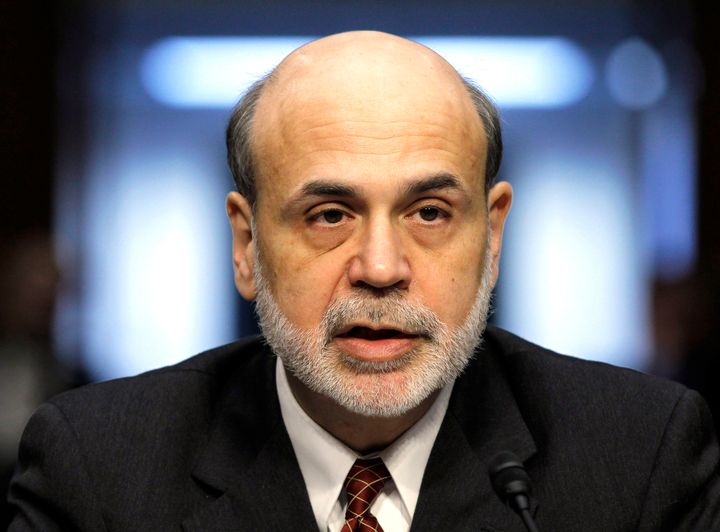
The Federal Reserve's 'Operation Twist' to bring down bond yields and stimulate the economy is likely to cause pain for the nation's largest pension funds, already struggling with funding shortfalls from the recent stock market decline.
Hit both by falling stock prices and falling bond yields, the 100 largest pension plans of public U.S. companies have assets covering only 79 percent of their liabilities as of the end of August, down from 86 percent at the end of 2010, according to consulting firm Milliman Inc.
Already approaching its all-time low of 70.1 percent in August, 2010, the funding ratio could fall below 60 percent within two years if equities stagnate and rates decline further, Milliman projected.
"I've said rates were at historic lows for three years now and they keep going lower," John Ehrhardt, a principal in the firm's New York office, said.
Corporate pensions were well funded back in 2007 before the financial crisis hit, but even though the stock market has recouped most of its losses, falling bond yields have prevented the funds from regaining their solid footing.
"The bond market tends to be the forgotten side of the equation," David Kelly, a principal at consulting firm Mercer in Chicago, said. "The interest rate risk turns out to be at least as large a risk factor as equity risk for pensions."
The Federal Reserve on Wednesday announced its latest effort to lower yields and kick start the economy through $400 billion of bond purchases.
That could drive down the yields on AA-rated corporate bonds and related benchmarks used by the pension funds to calculate their liabilities.
Most private U.S. defined benefit plans, which oversee about $2 trillion, are hurt when long-term yields decline because of the way the plans must value future payouts they will make to retirees in coming decades.
The total doesn't include the more popular defined contribution plans, like 401(K)'s, which contain almost $5 trillion and put the onus on workers to manage their own finances. Those plans have been hit by falling markets, too, but do not face the same accounting challenge.
Lower rates mean the future benefits have a higher present value, ballooning the defined benefit funds' liabilities. Pension consultants estimate a 1.0 percent drop in rates increases liabilities by 10 percent to 15 percent.
Well-managed pensions are supposed to match the current worth of their assets and liabilities. In essence, a present value calculation estimates how much it would cost to borrow the total future liabilities right now and deducts the cost of the interest.
Falling rates also increase the value of any bonds the funds may own but most pension portfolios tilt more toward equities and away from fixed income assets. And bonds they do own tend to be in shorter maturities, which appreciate less when rates fall.
"Unfortunately, the vast majority of pension funds continue to pursue aggressively mis-matched strategies," said Bradley Belt, senior managing director at the Milken Institute and the former head of the U.S. Pension Benefit Guaranty Corp.
If the funds' assets fall short, companies that sponsor the plans for their workers will have to increase their annual contributions by tens of billions of dollars over the next few years, Belt said. And if the companies ultimately fall short, the PBGC's government insurance would be on the hook.
Laurence Fink, chief executive of money manager BlackRock, called the pension situation and similar underfunding of individual retirement accounts "probably the largest crisis that the U.S. is going to face." Speaking at a conference in New York on September 12, Fink said low rates were having a "dramatic impact" in harming pension funds.
BlackRock, which oversees $3.7 trillion for pension funds and other investors, is urging many of its corporate pension plan clients to match assets and liabilities more closely, in part by shifting money from equities to bonds.
But with the funding ratios and bond rates so low, the matching programs should be phased in over several years, Andy Hunt, managing director at BlackRock in New York, said. "Pension plans need to learn the lessons of the past few years and set themselves on the right course for the future," Hunt said.
Further damage from lower rates is likely despite the fact that some closely watched rates, like the yield on the 10-year Treasury note, are already at historically low levels.
"Rates can still drop further," Leonard Grimando, director of corporate ratings at Standard & Poor's in New York, warned, noting that pension fund benchmarks are much higher than the 1.9 percent 10-year Treasury yield.
On average, companies rated by S&P used a discount rate of 5.34 percent in 2010, down from 5.85 percent in 2009.
"The current rate would now be slightly below 5 percent," Grimando said.
Copyright 2011 Thomson Reuters. Click for Restrictions.
